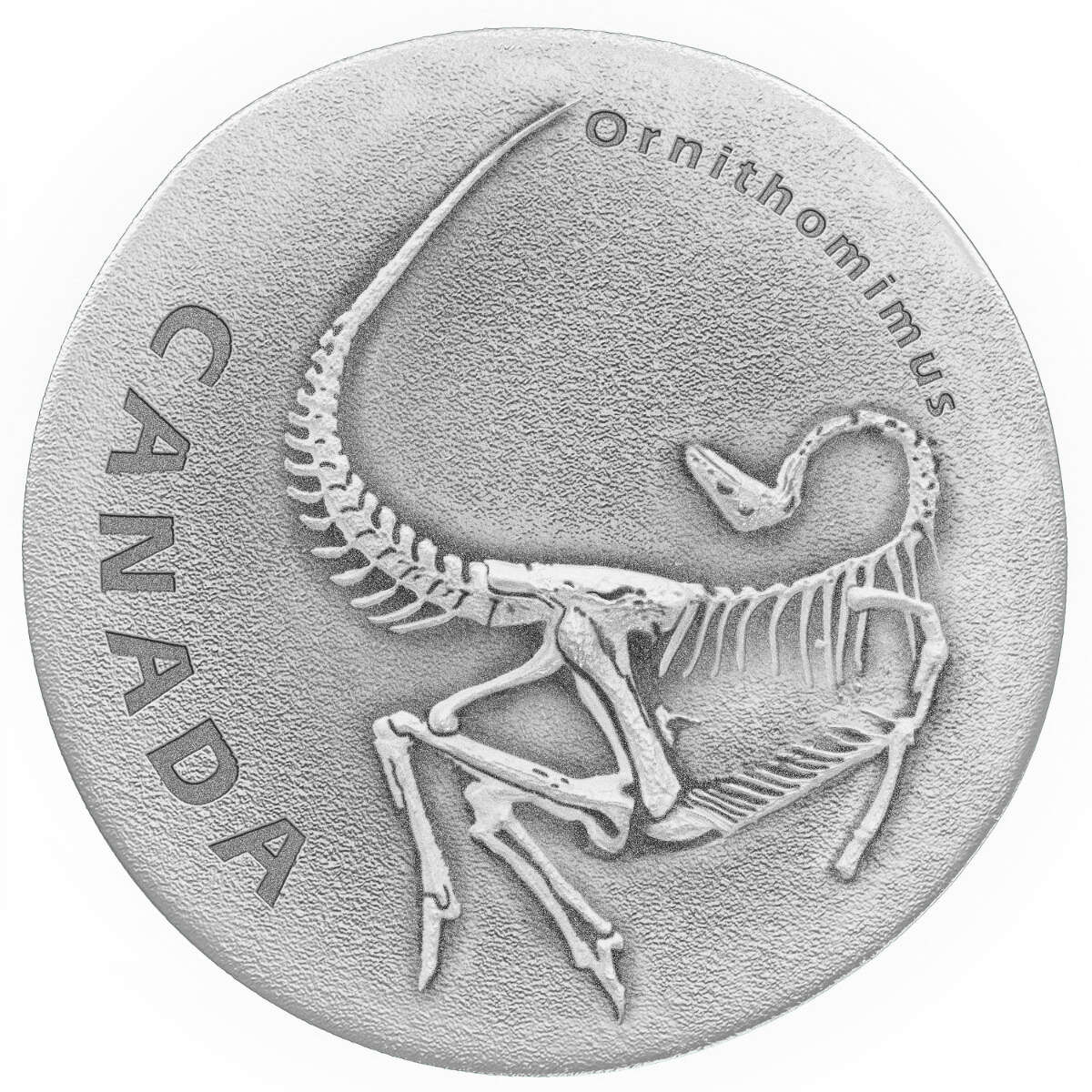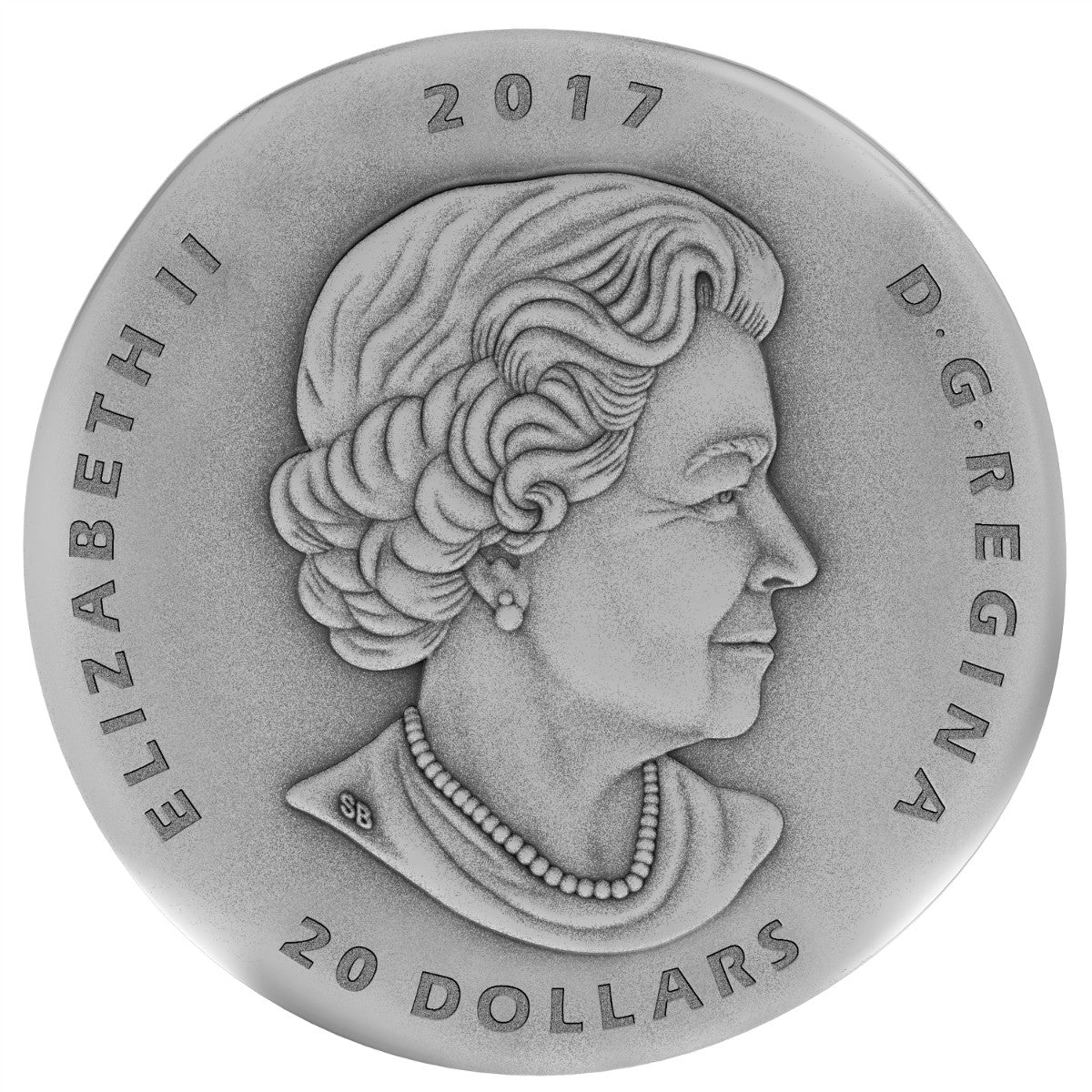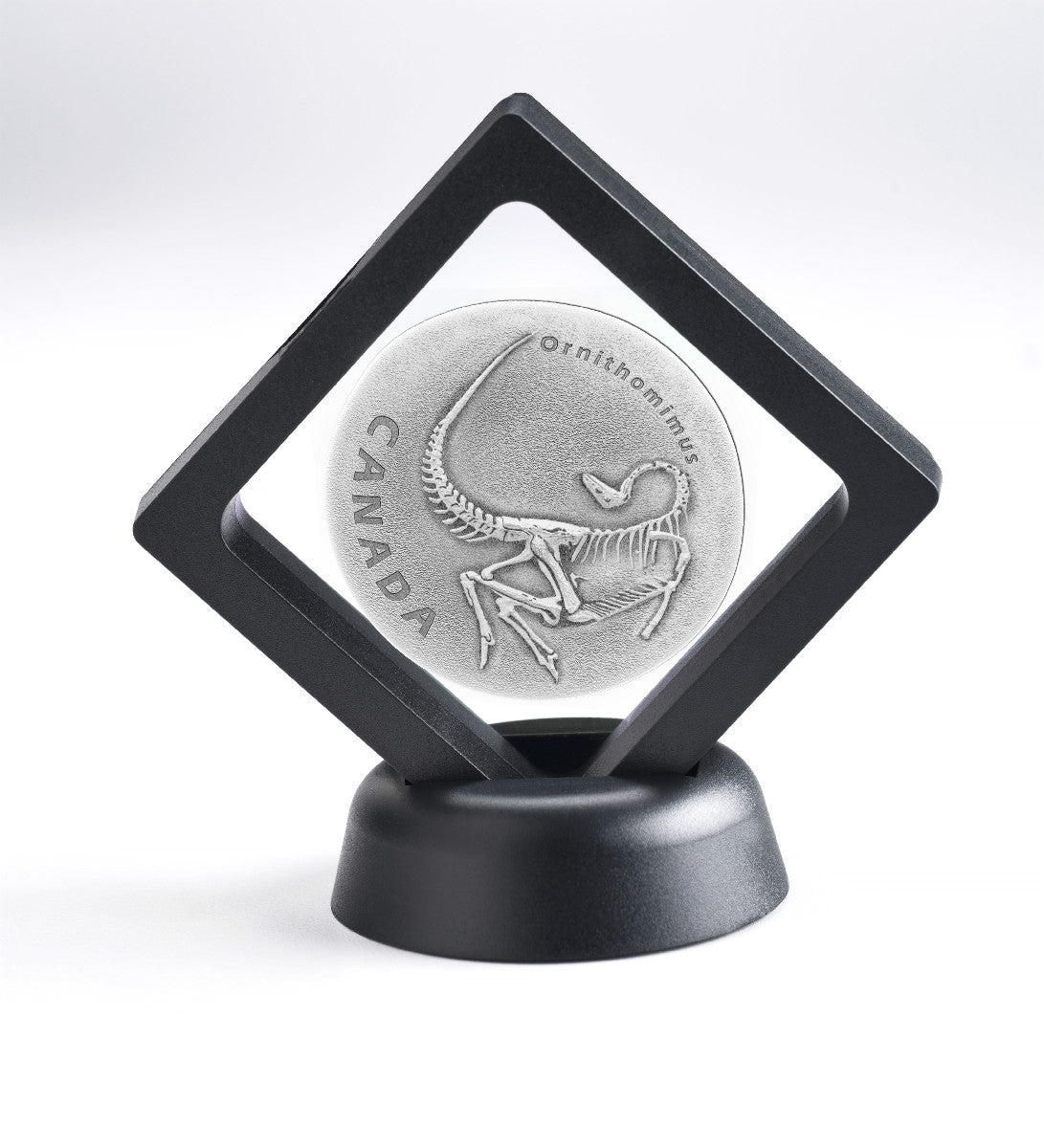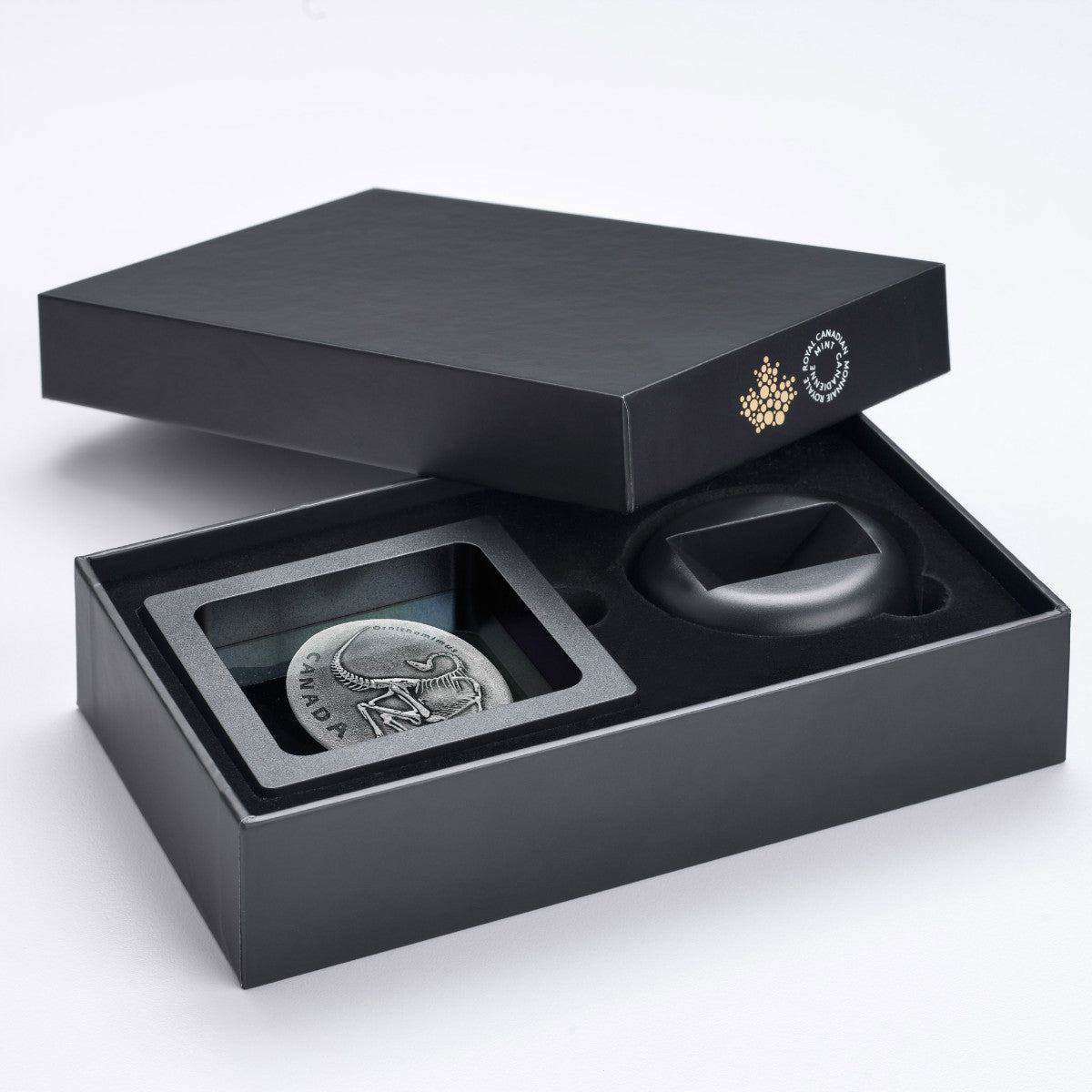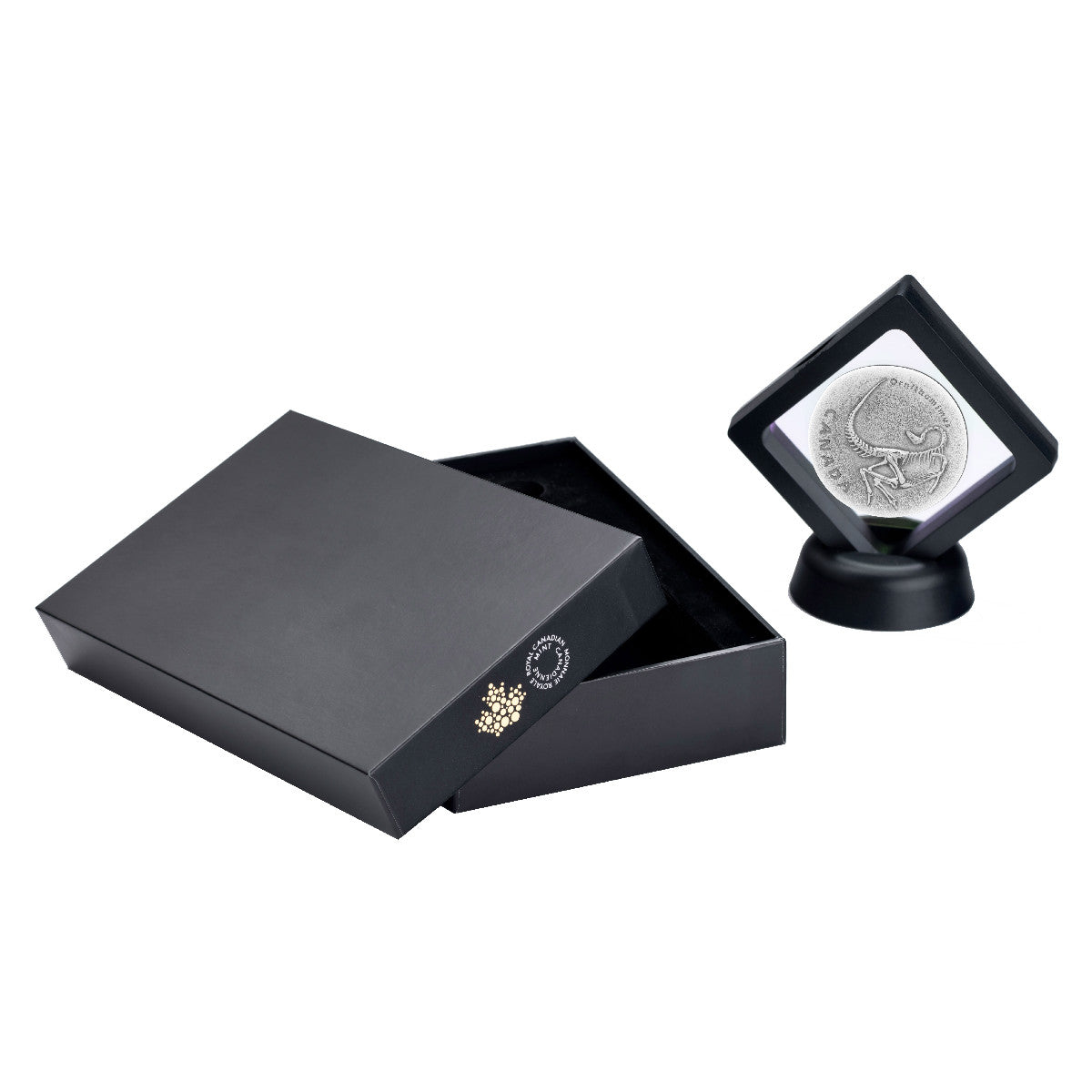Description
This is Ancient Canada! Millions of years ago, the Canadian landscape was teeming with prehistoric species whose remains lie in the rocks that bridge our era with theirs. During the Late Cretaceous period 100 to 66 million years ago, a 300 pound ostrich like dinosaur with a small toothless head roamed what is now the Alberta Badlands. This 2017 $20 fine silver coin with antique finish features a depiction of the fossilized remains of Ornithomimus, based on an actual fossil now housed at the Royal Tyrrell Museum of Palaeontology in Drumheller, Alberta.
To add to the realistic appearance of this coin, the Royal Canadian Mint has employed for the first time ever a “splash struck” technique, giving each coin a unique shape much like a true fossil. The coin weighs one ounce of pure silver, and has a limited mintage of just 5,500 coins. As a pure silver coin struck by the Royal Canadian Mint, this item is HST/GST exempt.
The Design:
The rimless coin’s unusual contour is the product of an old coin-making technique that allows the fine silver to “spill out” which produces an irregular shape reminiscent of an ancient Roman coin. In contrast, cutting-edge technology and finishing techniques add a smooth appearance to the engraved fossils of the feathered dinosaur Ornithomimus, which shines bright in comparison to the textured appearance of the “sandstone” encasing throughout the reverse. The entire design has an unmistakably ancient look and feel, thanks to a patina finish that gives the coin its aged look.
The coin comes ready-to-display in a floating frame. Measuring 80 mm x 80 mm x 34 mm, this framed presentation makes for one-of-a-kind display art and collectible at the same time. The coin’s antique finish is sealed in lacquer and has the benefit of minimizing the appearance of fingerprints, should the coin be removed from its frame.

